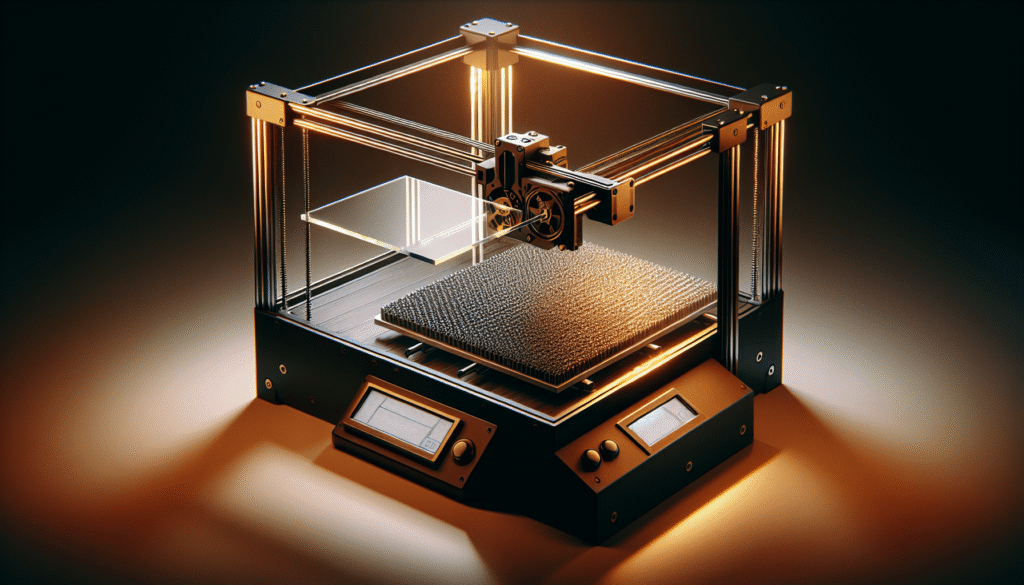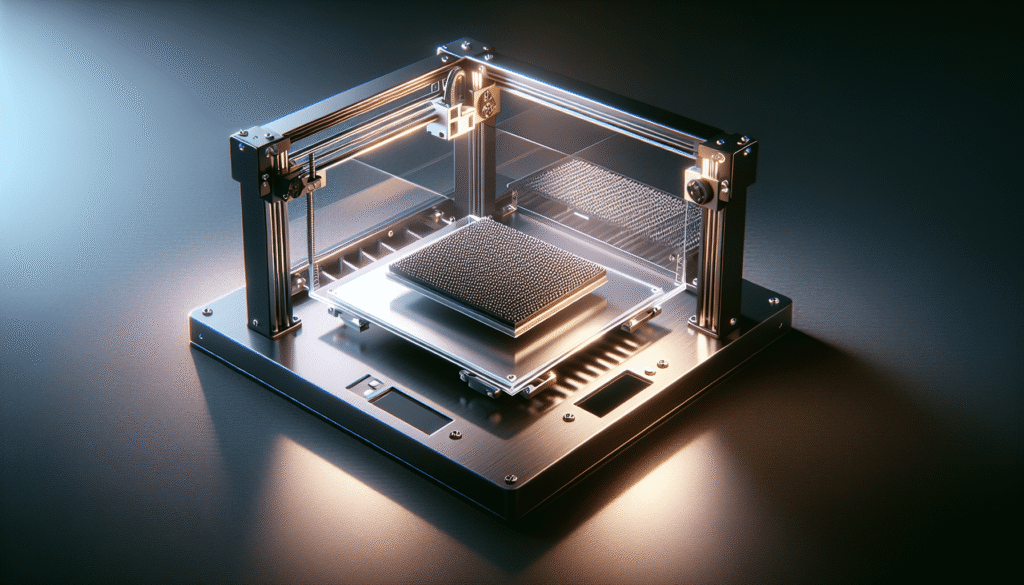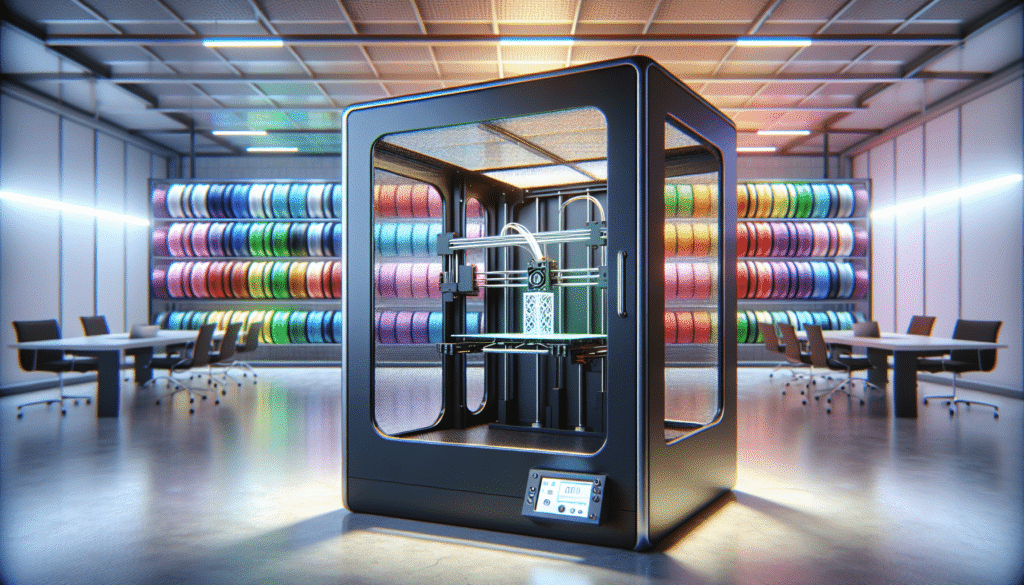Do you ever find yourself staring at your 3D printer, pondering whether your choice of printing bed could be holding you back from achieving that flawless final print? As someone who has spent more hours than I’d like to admit in the company of a 3D printer, I often mused over this very question. Let’s embark on a friendly journey into the world of 3D printing beds, examining the pros and cons of both glass and magnetic beds in our mission to conclude which is better for 3D printing.

Understanding 3D Printer Beds
Before diving deeper into glass and magnetic beds, let’s take a brief pause and discuss what 3D printer beds do. These beds are the platform on which all your 3D printing dreams come to life—or, in some frustrating cases, fail to adhere properly and warp into unrecognizable shapes. The choice of bed can influence the printing quality, ease of model removal, and even the kind of filament you use. There’s a surprising amount of detail behind these seemingly simple platforms.
The Glass Bed Experience
Let’s start with glass beds, a choice that feels as polished and smooth as its surface. Glass beds have garnered a loyal following, and for good reason. Their smooth surface offers an excellent base for prints and usually provides a mirror-like finish for the bottom layers of your model. With thermally stable properties, glass beds ensure that the heat distribution is consistent, helping in reducing warps and unwanted curls.
Advantages of Glass Beds
- Smooth Surface Finish: Prints often look neat, with a clean bottom layer.
- Thermal Stability: Glass maintains a consistent temperature, reducing the odds of prints warping.
- Durability: Long-lasting and resistant to scratches.
- Easy Cleaning: Residue removal is typically hassle-free.
Disadvantages of Glass Beds
Despite these upsides, glass beds have some drawbacks. They can be:
- Slippery: Excessive adhesive might be required to ensure print adhesion.
- Fragile: Prone to breakage if mishandled.
- Heating Time: Takes a while to reach the desired temperature.
For those of you who have already made a mess of glue sticks in a desperate bid for adhesion, you’ll appreciate this struggle.
Delving Into Magnetic Beds
Magnetic beds present themselves like the cool new gadget everyone wants to try. Think of them as flexible powerhouses. These beds sport a magnetically attached surface that can be easily removed, allowing for effortless print removal, especially for stubborn pieces.
Advantages of Magnetic Beds
- Flexibility: The bed’s surface can be bent to pop off prints easily.
- Quick Detachment: Allows for easy swap and replacement.
- Good Adhesion: Materials often adhere well due to the magnetic surface properties.
- Ease of Use: Simplifies the print removal process.
Disadvantages of Magnetic Beds
With their own quirks, magnetic beds sometimes present challenges like:
- Heat Resistance Limitations: The magnetic element might not withstand high temperatures.
- Surface Wear and Tear: Magnetic surfaces can degrade faster.
- Stability Concerns: Magnets can sometimes lose grip.
Picture yourself bending a magnetic sheet like a magic trick to remove a stubborn print—it’s quite satisfying when it works as intended.
Comparing Glass and Magnetic Beds
Now, let’s break down the two contenders with a friendly table to visualize their traits side-by-side:
| Feature | Glass Bed | Magnetic Bed |
|---|---|---|
| Surface Finish | Smooth and reflective | Generally smooth |
| Thermal Conductivity | High | Moderate |
| Durability | Long-lasting but fragile | Prone to surface wear |
| Ease of Use | Moderate | High |
| Adhesion | May require adhesives | Generally good |
| Flexibility | None | High |
| Heating Time | Longer | Fast |
Seeing it all laid out makes it easier to appreciate the strengths and weaknesses with a side of friendly debate.
Real-World Printing Situations
What about the real world, where our theoretical insights hit the impractical snags of day-to-day printing? Well, the choice often boils down to what you love printing most. Glass surfaces are a dream for those printing flat objects needing a sleek surface sheen. Meanwhile, magnetic beds may be your saving grace if you frequently print complex models that need a little encouragement—or struggle—to detach.
User Preferences and Experiences
I’ve had chats with quite a few fellow printing enthusiasts; each had their tales and trials, their favored bed largely reflective of what they regularly print or their habits. Those amongst us who print daily swear by the speed of magnetic beds, whereas perfectionists may lean toward the excellence the glass bed provides in the final finishing look.
Which Bed Matches Your Needs?
To know which bed best fits your printer setup, evaluate how you primarily interact with your printer. Are you aiming for exhibit-worthy pieces or just functional prints tossed aside once done? Are you patient with waiting times or someone thriving on efficiency? These considerations, not unlike matching pairs of shoes to an outfit, make choosing the right bed easier.
Glass Bed Recommendations
- Suitable for detailed projects.
- Ideal for users familiar with adhesion techniques.
- Best for temperature-sensitive prints.
Magnetic Bed Recommendations
- Perfect for those seeking quick print removal.
- Advantageous for regular users due to convenience.
- Great for medium-sized prints needing flexible disengagement.
Conclusion: The Best Choice for You
Both beds have a charm; choosing between a glass or magnetic bed isn’t about identifying a universal best, but finding one that harmonizes with your style and needs. The seamless elegance of glass or the practical flair of a magnetic platform—your 3D printing endeavors will tie back to this decision. For me, alternating between these beds felt like owning different shoes, suited for occasions dictated by mood, efficiency, and desired output.
And so, as you stand before your printer bed pondering the possibilities, my friend, choose the one that brings a spark of joy along with precision and ease. Here’s to stress-free printing and beds that make every print a rewarding endeavor!

